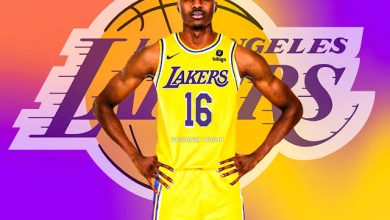Breaking news:Dylan Brown Makes History with $13 Million, 10-Year Deal to Join Newcastle Knights in Groundbreaking NRL Move”

In one of the most significant moves in the history of the National Rugby League (NRL), Parramatta Eels five-eighth Dylan Brown has completed a blockbuster transfer to the Newcastle Knights, signing a jaw-dropping 10-year contract worth $13 million. This deal, set to begin in the 2026 season, has not only made waves in the NRL but also raised serious questions about the future direction of player contracts, long-term commitments, and the financial sustainability of such enormous deals.
The Deal That Shook the NRL
Dylan Brown’s move is a game-changer for the NRL, marking the largest player contract in the league’s history. Brown, at just 24 years old, has established himself as one of the most dynamic and influential players in the competition, having played 124 games for the Eels since his debut in 2019. However, his decision to leave the club, after having spent his entire career there, is a testament to the power of the financial and security assurances offered by the Knights.
While the enormous dollar figure—$13 million over 10 years—has grabbed most of the headlines, the true essence of the deal lies in its long-term nature. Brown himself has spoken candidly about how the deal offers him the kind of stability that he’s always wanted. He remarked, “Money has never really been a thing for me. It’s the 10 years of security,” shedding light on the fact that his decision was influenced by more than just financial incentives but also the guaranteed long-term future the deal represents.
Mixed Reactions: A Leap of Faith or A Masterstroke?
Not everyone is convinced that this is a wise move, however. Critics argue that committing to a 10-year deal for a player who has yet to prove himself as a dominant force in the halfback position, where he will be expected to take on an even bigger role at Newcastle, is a monumental risk. Former NRL player and expert Paul Crawley has gone on record saying, “It’s a huge gamble for the Knights.” While Brown has been exceptional in his five-eighth role, his transition to halfback—an even more pivotal position on the field—raises doubts about his ability to sustain his high performance over the next decade.
Adding to the skepticism, Newcastle Knights legend Andrew Johns expressed his surprise upon hearing the news, stating that he “nearly fell over” upon learning the details of the deal. For many, including fans and analysts, this high-stakes gamble could pay off or backfire spectacularly.
On the flip side, some analysts believe that Brown could be the key to unlocking Newcastle’s potential. The Knights have long struggled with consistency in their halves, and bringing in an established player like Brown, who has already demonstrated leadership qualities and a flair for attacking play, is seen as a critical piece in a long-term strategy. Brown’s partnership with star fullback Kalyn Ponga is already being hailed as a potentially lethal combination.
Newcastle’s Bold Strategy: A Club Looking to Build for the Future
From the perspective of the Newcastle Knights, this deal isn’t just about securing a talented player; it’s about reshaping the club’s future. For years, Newcastle has been searching for that one player who can anchor their attack and provide the consistency they need to compete at the highest level. With Brown in the fold, the club is hoping to build a team capable of challenging for premierships over the next decade.
Knights coach Adam O’Brien, however, has tried to maintain focus on the present, opting not to speak too much about the future or the specifics of the Brown deal. “I’m not talking about Dylan Brown,” O’Brien said firmly, emphasizing the importance of focusing on the current season rather than future acquisitions. The Knights are clearly intent on making the most of the present while they secure their future with Brown.
The Eels’ Response: Understanding the Move, but Concerned About the Future
While the Eels have not openly criticized Brown’s decision, the club acknowledges that the magnitude of this deal places them in a challenging position. Mark O’Neill, the Eels’ general manager, expressed understanding, but also concerns, remarking, “It’s a great deal for Dylan, but for the club, it puts a noose around their neck for 10 years.” The Eels are now tasked with moving forward without one of their key playmakers, and the club must quickly find a suitable replacement.
The situation also raises broader questions about the financial landscape of the NRL. Long-term contracts of this magnitude could reshape how clubs approach player acquisitions, potentially placing them in financially precarious positions if players do not live up to expectations. The long-term commitment could





